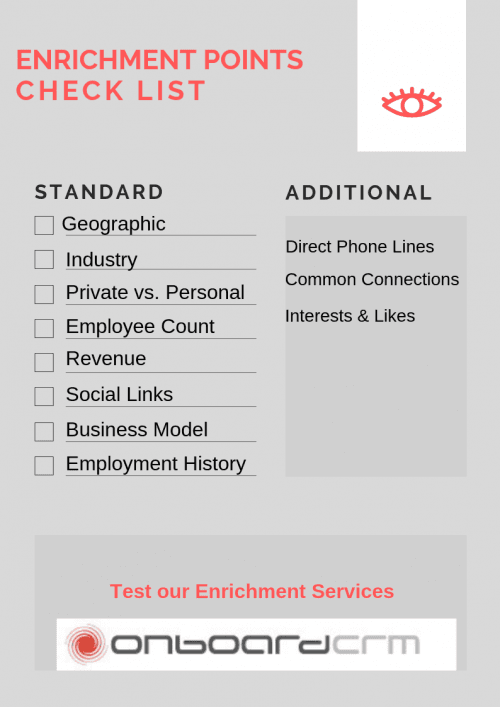Data enrichment has evolved to become a core element of data services. In B2B, it is the remedy for low marketing efficiency and failure to segment data for demand generation properly. What started as simple “data appending” grew into a robust hybrid service that now separates the amateurs from the professionals. Winning large enterprises in the IT channel adopt enrichment practices, but they are extremely careful when selecting service suppliers.
Because enrichment is an automated process, we should not forget that it isn’t completely reliable. This is where the question “What do you actually pay for?” becomes relevant. If you’re paying by number of records checked or number of searches carried out, are these records being updated with anything newer or more relevant? Is there any way you can be sure?
Data Hygiene
Before embarking on enrichment you need to ensure your data is clean. Non-existent or repeat contacts will mess up the enrichment process, so it’s vitally important to make sure your provider promises the best possible levels of data hygiene. Further, CRM platforms have inherent functional problems that enrichment won’t be able to solve. These include catch-all email domains – email addresses possibly belonging to someone who still works at the company, previously worked there or, indeed, never worked there; there’s no way of knowing. Also misspellings, typos and re-assigned phone numbers add to the woes.
Providers generally take some precautions against these problems. It’s important to check that they meet or exceed your standards. If your suppliers don’t mention CRM contact verification and general cleansing, be alerted.
Preparing data for enrichment considers the following:
Standardization – uniformity of fields for all CRM users, e.g. whether firms’ incorporations are to be included in their names
Parent Accounts – A standard treatment of companies with subsidiaries. How well CRMs handle this varies.
Removing Duplicates – Duplicates will occur from automated processes and from repeat entries. The system you use needs to be able to find these and remove them.
Permissions – Although a feature of all CRM systems, different systems handle them differently.
Maintenance – Regular (e.g. monthly or quarterly) spot checks and clean-ups.
Find High Quality Service to get High Quality Data Enrichment
So now that you have your own systems in order it’s time to find a Provider. Inquiring about technical capabilities goes along with verification and analytics services. You want to look for a robust hybrid solution that keeps in check both tech and human errors.
Here are some pointers towards what to look for if you want high quality data enrichment service. Check the data points that your Provider uses. There is no standard list but it usually includes the following:

Obviously, the more fields your Provider uses, the more enrichment will be possible. However, how those data points are found and managed is more important to discuss.
In this discussion, you will need a few processes explained to you:
- The first is the basis of charging: do they include obsolete contacts in the total number, assuming they charge on the basis of your CRM size or number of API calls?
- Quality-checking the data before enrichment – whether and how they verify data.
- Within these processes, what do they do with accept-all domains if they claim to validate email addresses?
- Check how often they update their data?
- Do they enrich job titles and, if so, is yours included and when did they last see that info – was it more recently than you?
- Do they enrich phone numbers and, if so, what types of numbers (mobile, direct line or main company line)?
Returning to my first questions, what you actually pay for and how to compare different providers can be difficult. Using your own list of requirements and standards will greatly help you compare providers. And if possible, do test the service before engaging.



